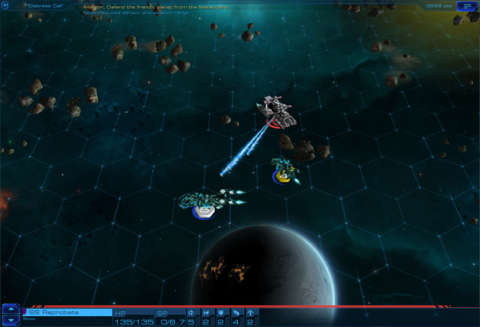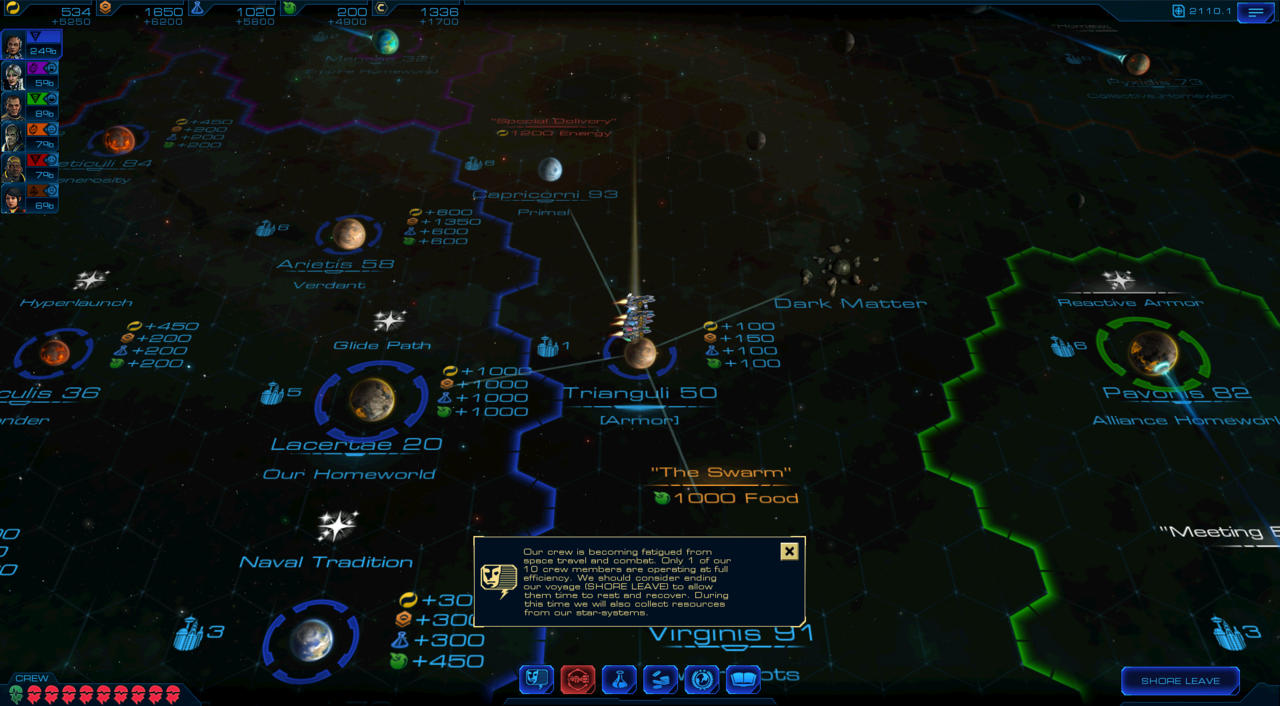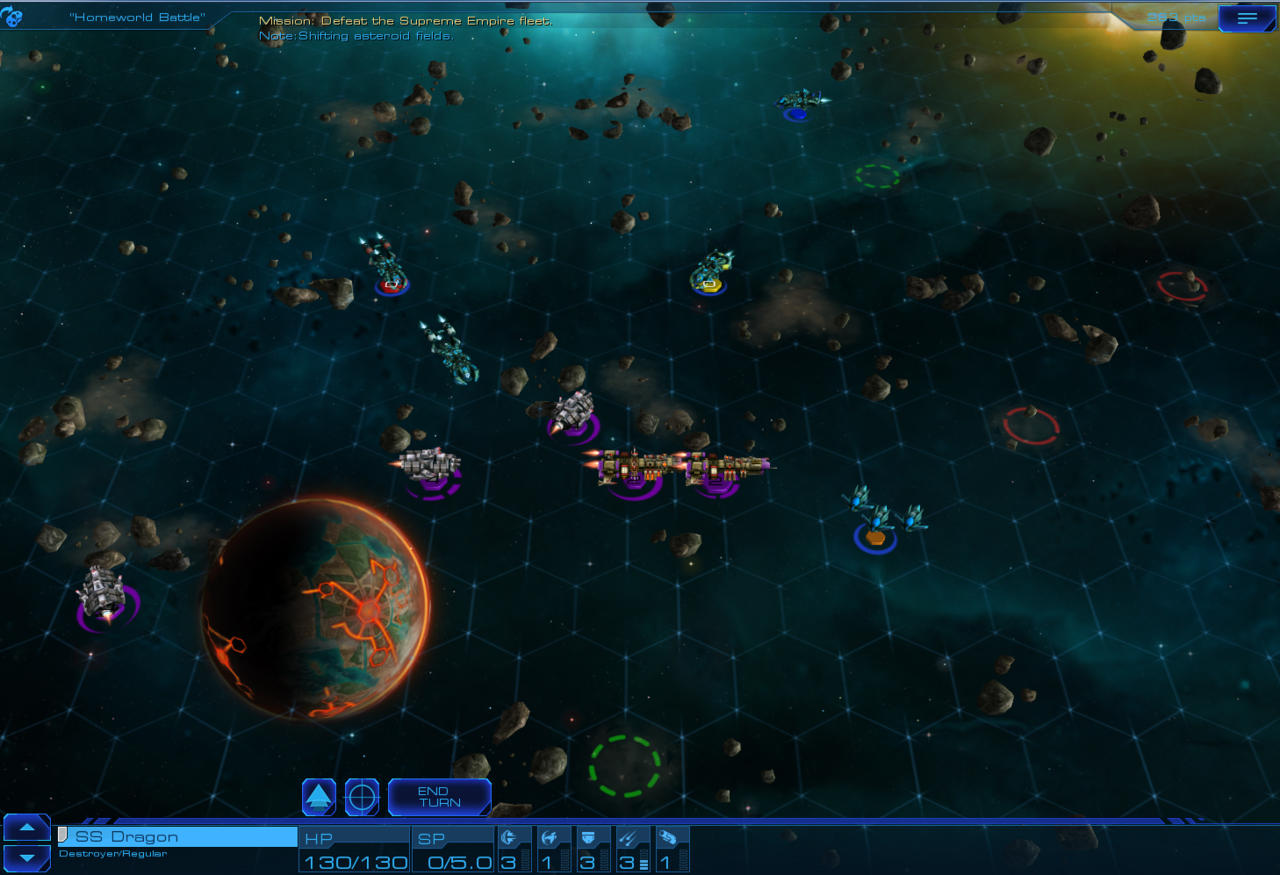Design legend Sid Meier has been creating strategy games for long enough that you'd suppose he has encountered and surmounted every possible obstacle one could imagine. Thankfully for every armchair tactician ready for the next challenge, Meier never runs out of ideas to try and problems to overcome. His newest game, Sid Meier's Starships, was announced just yesterday. It is not a grand strategy epic in the vein of Civilization; instead, Starships' closest relative within the Sid Meier pantheon is probably Ace Patrol. In this case, you control a single fleet made up of many spacecraft, and maneuver that fleet about the galaxy, performing missions, spreading influence, and customizing ships for maximum battle effectiveness. Just because you aren't controlling dozens of units across a planet-spanning map doesn't mean that a game doesn't present unique issues during development, however.
I got a chance to discover just what some of those challenges are just recently, during a chat with Meier himself. It wasn't my first time talking with him; during a trip to Baltimore a couple of years back, Meier had told me about weekends spent creating gameplay prototypes during the development of XCOM: Enemy Unknown. He clearly loves the act of creation, so it doesn't surprise me that Meier and the other members of his team at Firaxis have aimed their focus at smaller games that prioritize systems over a big-budget presentation. Meier sounds excited when he talks about stripping away peripheral concerns, and it's easy for me to be excited with him. Isn't a creator's time and energy best spent on the act of creation?
Mortal Kombat 1 – Official Invasions Season 5 Gameplay Trailer The Outlast Trials | Toxic Shock Limited-Time Event and Update Trailer Devil May Cry: Peak Of Combat | Vergil: Count Thunder Returns Gameplay Trailer Life Eater - Official Launch Trailer Honkai: Star Rail - Official Aventurine Trailer | "The Golden Touch" The Complete FALLOUT Timeline Explained! Warhammer 40k: Darktide - Path of Redemption | Update Trailer SAND LAND - Official Darude Sandstorm Trailer No Rest for the Wicked - Official Steam Early Access Launch Trailer Battlefield 2042 | Frontlines Mode Returns - Time-Limited Event Trailer Is Fallout 76 Good in 2024? 21 Details You May Have Missed In Helldivers 2
Please enter your date of birth to view this video
By clicking 'enter', you agree to GameSpot's
Terms of Use and Privacy Policy
"When I did Pirates and Civilization and Railroads, we spent a year on a game," says Meier, "and two-thirds of that time was actively designing the game. Changing it, playing it every day. These days, we might spend two or three years on a game, but there's only the same amount of actual game design time. So what I wanted to get back to was a method of making games that really focused on game design, that allowed us to spend most of our time designing and maybe a little less of our time on all the other stuff needed to make games."
"We can do games on a shorter schedule," he continues, "but there's still the same amount of actual game design, the same amount of time spent iterating and evolving the game as with other games. For me, the fun part is the design and watching it grow and iterating, and this approach gives us the ability to kind of focus most of our time and energy on that part of what we're making."
What Meier and Firaxis are making brims with potential. I can see elements of XCOM in it, for instance, mostly within the turn-based space battles that play such a central role. You move units into position and then attack opposing units or use special abilities to gain the advantage, and there's even a sort-of cover system in which asteroids function as natural barriers by interfering with your line of sight. And while those units may be spaceships rather than human soldiers, you still establish a relationship with your vessels by choosing which type to purchase, and how to customize them as you earn currency over time.


Says Meier, "We want people to get invested in these individual ships so that you recognize them from one encounter to the next. 'This is my battleship, this is my reconnaissance ship, this is my sneaky ship, this is my fast ship.' In XCOM, you get attached to these soldiers as they perform mission after mission. And the idea is kind of similar in Starships. You built these ships, you designed them, you upgraded them, they've been with you through this whole series of missions. You get to know them individually and what their strengths and weaknesses are. That's really the thread that goes through from one mission to the next."
As for any suggestion that Starships is too simple, well, Meier seems unconcerned. "It's a different system from Civ, for example, where you have many different units spread out in different places," he says. "But it kind of lends itself to the story we're trying to create and the situations that this game represents." And it's clear that it's on the battlefield where Starships is in its element. Ships can spawn vulnerable swarms of fighters for harassing the enemy, fire off torpedoes that persist over several turns, and use long- and short-range weaponry to turn enemy craft into space debris. In between battles, you level up your corvettes and battleships, further cementing their role in your ongoing combat strategy. There are multiple victory conditions--you can grow your influence until you gain half of the galaxy's population, or upgrade enough technology to earn a science victory, for instance--but the fun is in the fight.
We can do games on a shorter schedule, but there's still the same amount of actual game design, the same amount of time spent iterating and evolving the game as with other games.
Sid Meier

What it means to engage in that fight has changed during Starships' development. Says Meier, "There's many different ways of approaching space battles. This was actually not our first attempt, but the problem is often losing control over what's happening. There's so much stuff that could be out there--real time, three dimensions--it's very easy to create a confusing situation where the player is essentially behind the curve all the time and tries to figure out what's going on. Since we wanted the focus to be on building and designing starships, and tactical space battle where you use these kind of ships in clever, tactical ways, turn-based made sense for us, giving you that time to think and plan."
And as they always do, sensible ideas require sensible decision-making and plenty of fine-tuning. An example from Meier himself: random maps. "I love maps, I love random maps, he says. "So we had to figure out, 'How do we create random maps in space?' The system that we generated with the asteroid fields and the planets and the jumpgates and things like that, kind of had that mappish feel where it made sense where your ship was. It was important where you positioned your ships, it was important how they worked together. It was bringing these elements together that would make for an interesting tactical battle, and that drove a lot of the decision-making. A lot of the choices we made were based on that feeling of giving the player the sense of control and of having interesting things to think about in the course of the battle."
The heavy reliance on the tactical layer is a very conscious choice. Meier refers to the driving force behind a game as its center of gravity. In Pirates, the strategic story was the center of gravity, while the swordfighting and ship battles functioned as small episodes within that grander narrative. In Starships, on the other hand, the strategy layer is meant to support the tactical battles without getting in the way. Get it right, and the player understands the rules and claim ownership of his or her own strategy. Get it wrong, and the player is overwhelmed with choices that don't seem to relate to each other. "I like the way it turned out," says Meier about the strategy/tactics balance. "It feels good to me."

Of course, Starships doesn't exist in a vacuum, and it's no coincidence that it takes place in space. The game is the next chapter in the Civilization: Beyond Earth universe, and aims to show us the fates of all those other humans that have spread across the Milky Way. Your mission, as whichever pre-ordained commander you choose, is to explore the galaxy, help out civilizations that are in trouble, and build your systems-spanning federation. Meier isn't certain whether Starships might spawn a new franchise of its own. "The question about whether it becomes a brand or a franchise is one that gets answered a little bit down the road," he says, "when we see how people like it." Meier himself is pleased with the results. "The variety of missions is something I'm happy with. Actually having different goals and different play styles being required for different missions was a fun challenge to put in there." As for me, I'm happy Sid Meier is getting a chance to show us his creations more frequently. There's so much more to discover out there--even beyond the final frontier.

